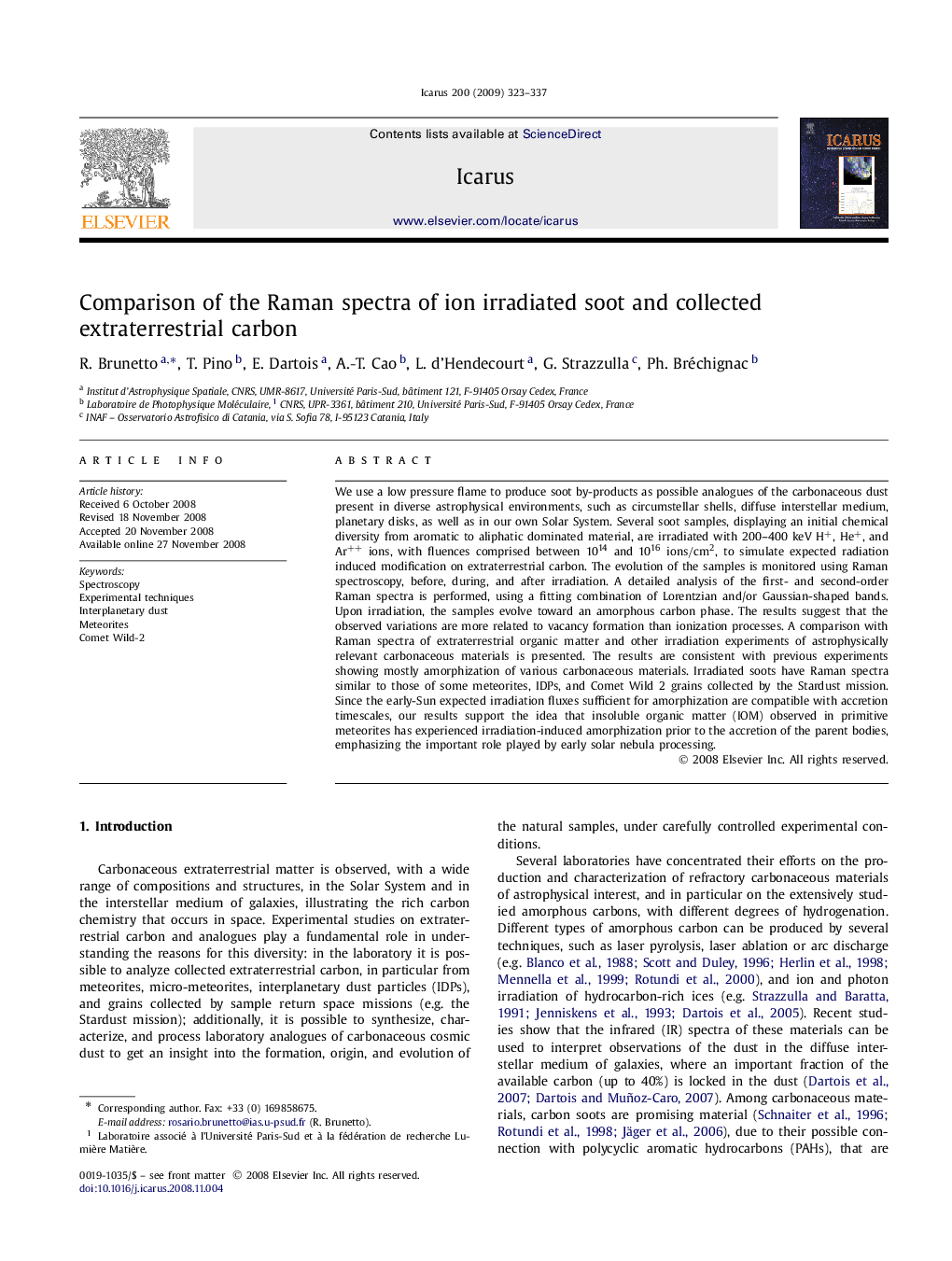| Article ID | Journal | Published Year | Pages | File Type |
|---|---|---|---|---|
| 1774826 | Icarus | 2009 | 15 Pages |
We use a low pressure flame to produce soot by-products as possible analogues of the carbonaceous dust present in diverse astrophysical environments, such as circumstellar shells, diffuse interstellar medium, planetary disks, as well as in our own Solar System. Several soot samples, displaying an initial chemical diversity from aromatic to aliphatic dominated material, are irradiated with 200–400 keV H+, He+, and Ar++ ions, with fluences comprised between 1014 and 1016 ions/cm2, to simulate expected radiation induced modification on extraterrestrial carbon. The evolution of the samples is monitored using Raman spectroscopy, before, during, and after irradiation. A detailed analysis of the first- and second-order Raman spectra is performed, using a fitting combination of Lorentzian and/or Gaussian-shaped bands. Upon irradiation, the samples evolve toward an amorphous carbon phase. The results suggest that the observed variations are more related to vacancy formation than ionization processes. A comparison with Raman spectra of extraterrestrial organic matter and other irradiation experiments of astrophysically relevant carbonaceous materials is presented. The results are consistent with previous experiments showing mostly amorphization of various carbonaceous materials. Irradiated soots have Raman spectra similar to those of some meteorites, IDPs, and Comet Wild 2 grains collected by the Stardust mission. Since the early-Sun expected irradiation fluxes sufficient for amorphization are compatible with accretion timescales, our results support the idea that insoluble organic matter (IOM) observed in primitive meteorites has experienced irradiation-induced amorphization prior to the accretion of the parent bodies, emphasizing the important role played by early solar nebula processing.
